Hyundai i30 vs Renault Scénic – Differences & prices compared
Two cars, one duel: Hyundai i30 meets Renault Scénic.
Which one wins in performance, efficiency and value for money? Find out now!
Here’s where it gets real: The technical differences in detail
Costs and Efficiency: Price and efficiency are often the first things buyers look at. Here it becomes clear which model has the long-term edge – whether at the pump, the plug, or in purchase price.
Hyundai i30 has the significantly advantage in terms of price – starting at 24000 £, while the Renault Scénic starts at 34600 £. That’s a price difference of about 10637 £.
Engine and Performance: Power, torque and acceleration say a lot about how a car feels on the road. This is where you see which model delivers more driving dynamics.
When it comes to engine performance, the Renault Scénic clearly takes the lead – with 218 HP compared to 140 HP. That’s a power increase of roughly 78 HP.
In acceleration from 0 to 100 km/h, the Renault Scénic is noticeably faster – completing the sprint in 7.90 s, while the Hyundai i30 takes 9.60 s. That makes it around 1.70 s quicker.
In terms of top speed, the Hyundai i30 is slightly ahead – reaching 197 km/h, while the Renault Scénic tops out at 170 km/h. The difference is roughly 27 km/h.
There’s also a difference in torque: the Renault Scénic pulls somewhat stronger, offering 300 Nm compared to 253 Nm. That’s about 47 Nm difference.
Space and Everyday Use: Beyond pure performance, interior space and usability matter most in daily life. This is where you see which car is more practical and versatile.
Both vehicles offer enough space for 5 passengers.
The Hyundai i30 is slightly lighter – 1291 kg compared to 1822 kg. The weight difference is around 531 kg.
In trunk capacity, the Renault Scénic takes the lead – 545 L compared to 395 L. That’s around 150 L difference.
In maximum load capacity, Renault Scénic wins – up to 1670 L, about 369 L more than the Hyundai i30.
Payload capacity also favors the Renault Scénic hardly any – 518 kg compared to 509 kg. The difference is roughly 9 kg.
Overall, the Renault Scénic proves to be is clearly superior and secures the title of DriveDuel Champion.
It impresses with the more balanced overall package and is the more versatile choice for everyday driving.
Hyundai i30
The Hyundai i30 stands out in the hatchback segment with its sleek design and modern features. It offers a comfortable ride with a well-crafted interior that caters to both driver and passengers. With its emphasis on safety and technology, the i30 provides a balanced driving experience suitable for urban and suburban environments.
details @ hyundai.news
@ hyundai.news
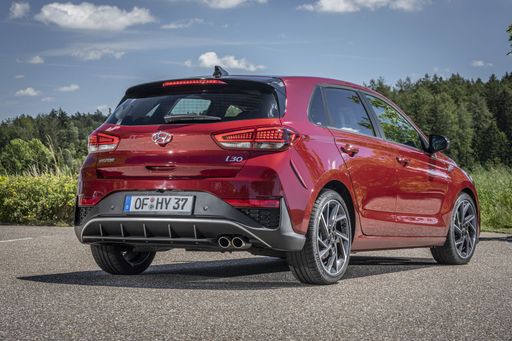 @ hyundai.news
@ hyundai.news
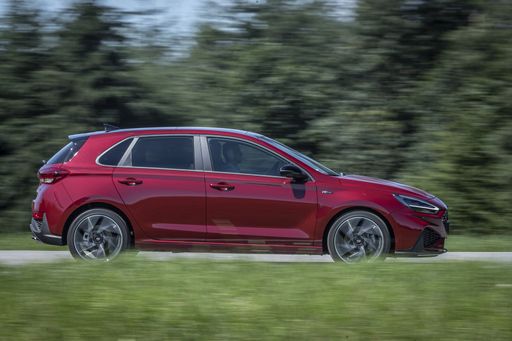 @ hyundai.news
@ hyundai.news
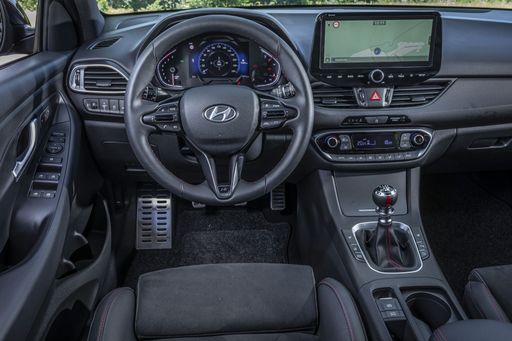 @ hyundai.news
@ hyundai.news
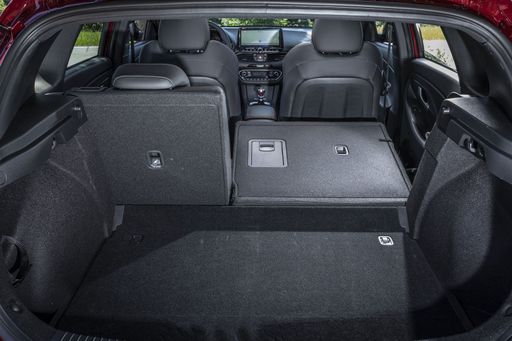 @ hyundai.news
@ hyundai.news
Renault Scénic
The Renault Scénic, with its distinctive design, captures attention through its sleek and modern aesthetic. Its interior is thoughtfully crafted, offering ample space and comfort for family travel or long journeys. The Scénic stands out with a strong emphasis on practicality, making it an ideal choice for those seeking both style and functionality in a vehicle.
details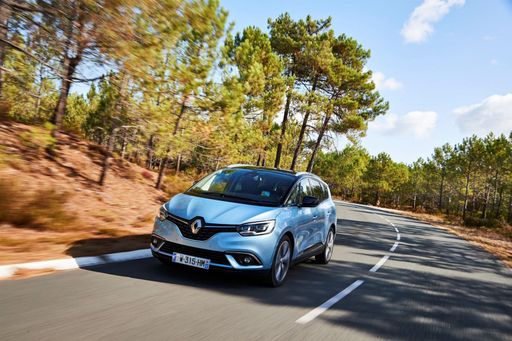 @ Renault
@ Renault
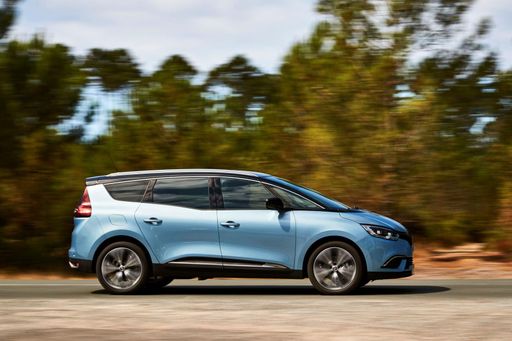 @ Renault
@ Renault
 @ Renault
@ Renault
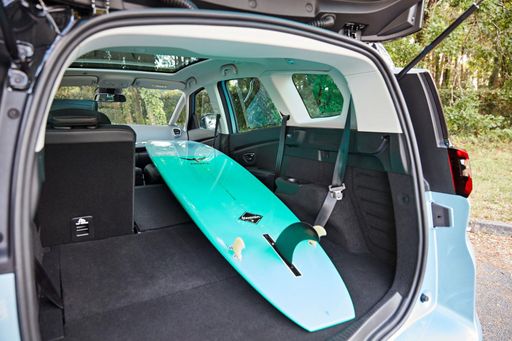 @ Renault
@ Renault
 @ Renault
@ Renault

|

|
|
|
|
Costs and Consumption |
|
|---|---|
|
Price
24000 - 29300 £
|
Price
34600 - 44000 £
|
|
Consumption L/100km
5.7 - 6 L
|
Consumption L/100km
-
|
|
Consumption kWh/100km
-
|
Consumption kWh/100km
16.6 - 17.5 kWh
|
|
Electric Range
-
|
Electric Range
420 - 598 km
|
|
Battery Capacity
-
|
Battery Capacity
-
|
|
co2
130 - 136 g/km
|
co2
0 g/km
|
|
Fuel tank capacity
50 L
|
Fuel tank capacity
-
|
Dimensions and Body |
|
|---|---|
|
Body Type
Hatchback
|
Body Type
SUV
|
|
Seats
5
|
Seats
5
|
|
Doors
5
|
Doors
5
|
|
Curb weight
1291 - 1407 kg
|
Curb weight
1822 - 1927 kg
|
|
Trunk capacity
395 L
|
Trunk capacity
545 L
|
|
Length
4340 mm
|
Length
4470 mm
|
|
Width
1795 mm
|
Width
1864 mm
|
|
Height
1455 mm
|
Height
1571 mm
|
|
Max trunk capacity
1301 L
|
Max trunk capacity
1670 L
|
|
Payload
463 - 509 kg
|
Payload
514 - 518 kg
|
Engine and Performance |
|
|---|---|
|
Engine Type
Petrol, Petrol MHEV
|
Engine Type
Electric
|
|
Transmission
Manuel, Automatic
|
Transmission
Automatic
|
|
Transmission Detail
Manual Gearbox, Dual-Clutch Automatic
|
Transmission Detail
Reduction Gearbox
|
|
Drive Type
Front-Wheel Drive
|
Drive Type
Front-Wheel Drive
|
|
Power HP
100 - 140 HP
|
Power HP
170 - 218 HP
|
|
Acceleration 0-100km/h
9.6 - 13.1 s
|
Acceleration 0-100km/h
7.9 - 8.6 s
|
|
Max Speed
178 - 197 km/h
|
Max Speed
150 - 170 km/h
|
|
Torque
172 - 253 Nm
|
Torque
280 - 300 Nm
|
|
Number of Cylinders
3 - 4
|
Number of Cylinders
-
|
|
Power kW
74 - 103 kW
|
Power kW
125 - 160 kW
|
|
Engine capacity
998 - 1482 cm3
|
Engine capacity
-
|
General |
|
|---|---|
|
Model Year
2024
|
Model Year
2025
|
|
CO2 Efficiency Class
D, E
|
CO2 Efficiency Class
A
|
|
Brand
Hyundai
|
Brand
Renault
|
What drive types are available for the Hyundai i30?
Available configurations include Front-Wheel Drive.
The prices and data displayed are estimates based on German list prices and may vary by country. This information is not legally binding.
